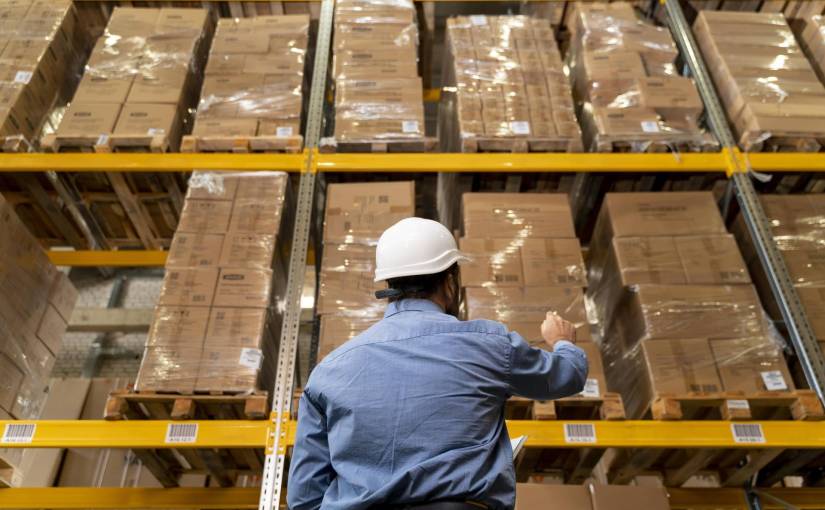Artificial Intelligence, or AI, has found its application in many industries, including inventory management, supply chain management, and warehousing.
In today’s modern marketplace, led by competitive SMBs and interconnected technologies that link sellers and buyers globally, being able to respond to change quickly is of utmost importance. Companies of all sizes experienced demand fluctuations when the pandemic hit.
This is where AI comes into play to make warehouse operations more efficient, even during unstable supply and demand. Your end goal should be transforming your old-school warehouse into a smart system that does things faster, better, and cheaper.
So, let’s dive right in and look at how AI technology can help your business stay prepared and respond to changes in workload.
1. How AI enhances productivity and accuracy
Until recently, most warehouse operations relied on human labor. However, this leaves a possibility for errors, miscalculations, and inaccuracies. Implementing AI in your warehouse operations saves time and costs, promotes work efficiency, and provides a better customer experience.
As a result, your warehouse will become more productive, and you will improve the accuracy of operations. For instance:
- Get real-time inventory updates with the help of sensors, smart shelf solutions, and automated inventory management software
- Use AI chatbots to quickly resolve customer queries with very little human interaction
- Use robots to support warehouse workflows and handle repetitive or physically-challenging tasks without fatigue
- Maintain a better speed of operations and output
- Sort, tag, and scan products with robots for easier management and distribution
- Reduce errors in fulfillment by synchronizing physical with digital inventory
- Enjoy better shipping route and delivery planning, resulting in shorter delivery times
The boost in productivity and accuracy of warehouse operations using AI comes from its power of collecting data and automating tasks.
According to a recent HBR research on warehouse automation, 42% of warehouse workers believed automation increases safety, 38% stated that automation makes their jobs faster and more efficient, and the remaining 20% said that automation boosts their quality of work.
These points are important since they show how much automation helps a business when there are sudden and rapid fluctuations in demand and workload. Plus, a nice “side effect” of your efforts to boost productivity with AI is saving costs and preventing unnecessary waste.
2. Automated order fulfillment
The most time-consuming warehouse operations are picking, packing, and fulfilling orders. In this area, the chances of human error are high, and speed is of utmost importance.
Due to the repetitive and manual nature of these tasks, AI can overtake operations and automate processes. To get synchronized results across multiple locations, especially if you’re an omnichannel seller, it’s best to automate both your digital and physical inventory.
You can automate your digital operations with a solid warehouse management system (WMS) to ensure that goods and materials move in the most efficient possible way. Often companies use ERP or TMS systems as well.
On the other hand, some great examples of automating physical order fulfillment operations are IoT helpers such as:
- Autonomous mobile robots (AMRs) for order-picking
- Automated guided vehicles (AGVs) for transporting goods
- Automated sorting systems or conveyor belts
The market for warehouse robots like AGVs and AMRs is expected to reach over $18 billion by 2027. So, companies are starting to use these devices to optimize their warehouse operations and work more efficiently.
Automated order fulfillment will greatly boost the shopping experience of your buyers, ensure speedy deliveries, and drive customer satisfaction and loyalty. Additionally, warehouse robots can also help you become more efficient in dealing with returns management and reverse logistics.
3. Smart and dynamic staffing
No matter how automated your warehouse is, you’ll likely still need human employees. Luckily, HR benefits from AI as well!
In terms of warehouse employees, the main issue arises when sudden changes in warehouse workload leave you understaffed. On the other end of the spectrum, overstaffing will devour your budget. So, this is where AI can help – at the intersection of supply chain management and HR.
For instance, you can use AI-powered logistics staff scheduling software to schedule employees in minutes and assign shifts or find replacements quickly in case of last-minute changes.

Self-learning AI systems use collected data to plan the workforce efficiently based on workload, current demand, forecasted demand, production capacity, appropriate time off and breaks for staff, etc. Additionally, tools like these can improve the efficiency of your routes, delivery planning, and assigning shifts to drivers remotely.
Synchronizing manufactury and delivery staff during fluctuating demand is another issue you can solve with AI-enabled shift scheduling.
On the subject of smart staffing, AI scheduling will also allow you to stay compliant and work according to labor laws and regulations. Parts of this regulation are ensuring equal hours for all employees, paid time off, vacation days and holidays, enough break time between shifts, and similar.
Modern warehouse operations are dynamic, so your workforce staffing solution also has to match!
4. Improved warehouse safety with AI
In times of turbulent demand, warehouse safety is often overlooked. Luckily, this is also an area where AI can help.
For instance, AI-fed IoT sensors can help keep an eye on warehouse equipment, aid the movement of human staff and robots to avoid collisions, warn when machinery is about to break down, and more. Another example is wearable IoT devices that monitor the health of your employees at all times.
Furthermore, according to the National Safety Council Injury Facts:
“Forklifts were the source of 78 work-related deaths and 7,290 nonfatal injuries involving days away from work in 2020.”
So, to prevent or decrease these forklift injuries, you can let AI robots do the heavy lifting. Another solution would be using ADAS (Advanced Driver Assistance System) and computer vision when operating forklifts to increase safety.
Additionally, warehouses can use AI and audio-enabled cameras to detect movement and ensure the safety of their inventory, machinery, and equipment. And, of course, to ensure there are no unauthorized entries in your warehouse, you can use advanced AI facial recognition to grant access to authorized personnel.
Last on the subject of warehouse safety is the importance of warehouse maintenance as the first step to preventing injuries and malfunctions. Look into implementing an AI-powered CMMS system (computerized maintenance management software) to help you stay proactive when dealing with maintenance.
5. Dynamic supply and demand planning
Last but not least, let’s see how you can optimize your supply chain with AI in a way that gets you more accurate projections and forecasts about the expected demand.
One of the main supply chain issues of retailers globally is inaccurate demand forecasting, resulting in high out-of-stock losses. But sourcing a lot more than you can sell is also not the answer. You can get stuck with dead stock if the trend passes and sales don’t go as expected. If this is you, you’re practically leaving money on the table.
Here are ways AI and Machine Learning (ML) can help you avoid problems like out-of-stock and dead stock:
- Predicting dynamic demand and adjusting the lead times accordingly
- Using a smart inventory system with RFID tags and sensors to signal low quantities
- Using robots to scan warehouse aisles and signal low inventory levels (similar to Sam’s Club’s recent inventory robots)
- Improving sales performance by predictive analysis
- Figuring out less popular products and decreasing their supply (and the opposite – ensuring there’s always safety stock of the more popular ones)
- Calculating safety stock more accurately to ensure uninterrupted supply
- Taking into consideration events like supplier holidays and non-working days, events, promotions, and sales you’re organizing, etc.
How AI can do all of the above lies in its power to analyze large amounts of data that would be impossible to do with other conventional methods. This ability of AI to process, structure, and understand large databases gives it superior predictive power. The more historical data you have available, the better decisions your AI will make.
Wrapping Up
Implementing AI technologies and solutions in warehouse inventory management operations might be a long-term investment, but it will pay off more than you imagine. The initial implementation cost is perhaps the only downside of this technology. But, as we said, with the boost in productivity and warehouse efficiency, AI has an incredible return on investment or ROI.
This is especially true for large-scale retailers and SMBs who collect large amounts of data that they don’t use properly. Here’s where AI shines – gathering, analyzing, and self-learning all about your business and customers to provide you with untapped financial opportunities (think upsells and cross-sells!).
All in all, AI makes it easier for any type of business to scale and become more efficient in its warehouse operations and overall workflows, especially in markets of inconsistent or unstable demand.
Inner Image Credits and Featured Image Credit: Provided by the Author; Thank you!



